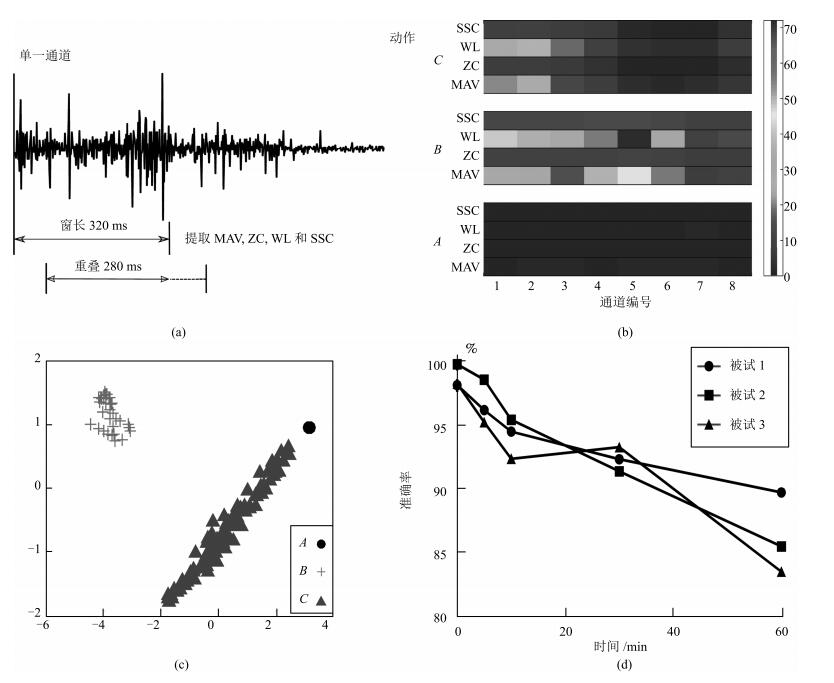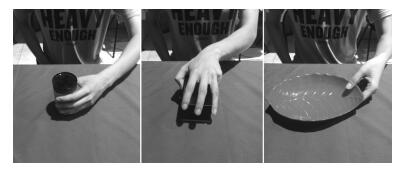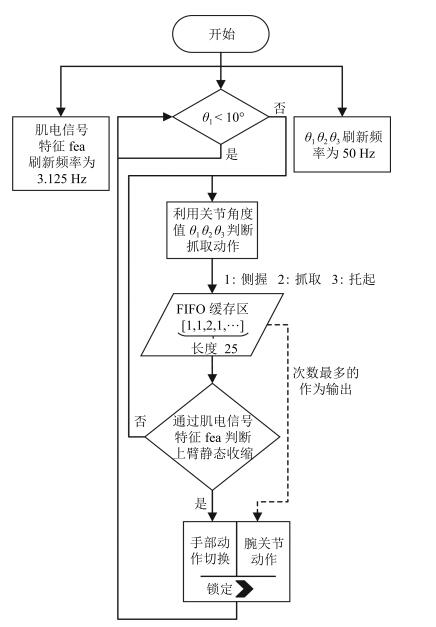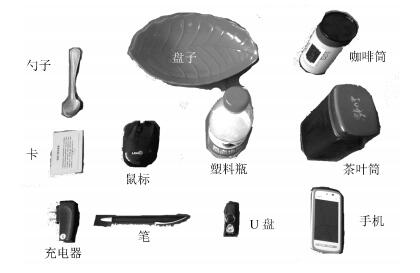|
[1]
|
侯增广, 赵新刚, 程龙, 王启宁, 王卫群.康复机器人与智能辅助系统的研究进展.自动化学报, 2016, 42(12):1765-1779 http://www.aas.net.cn/CN/abstract/abstract18966.shtmlHou Zeng-Guang, Zhao Xin-Gang, Cheng Long, Wang Qi-Ning, Wang Wei-Qun. Recent advances in rehabilitation robots and intelligent assistance systems. Acta Automatica Sinica, 2016, 42(12):1765-1779 http://www.aas.net.cn/CN/abstract/abstract18966.shtml
|
|
[2]
|
张良清, 苏沂峰, 杨万章, 李光林.多功能上肢假肢的研究进展.国际生物医学工程杂志, 2013, 36(5):311-316 http://med.wanfangdata.com.cn/Paper/Detail/PeriodicalPaper_gwyx-swyxgc201305014Zhang Liang-Qing, Su Yi-Feng, Yang Wan-Zhang, Li Guang-Lin. Research progress of multifunctional upper-limb prosthesis systems. International Journal of Biomedical Engineering, 2013, 36(5):311-316 http://med.wanfangdata.com.cn/Paper/Detail/PeriodicalPaper_gwyx-swyxgc201305014
|
|
[3]
|
佟丽娜, 侯增广, 彭亮, 王卫群, 陈翼雄, 谭民.基于多路sEMG时序分析的人体运动模式识别方法.自动化学报, 2014, 40(5):810-821 http://www.aas.net.cn/CN/abstract/abstract18349.shtmlTong Li-Na, Hou Zeng-Guang, Peng Liang, Wang Wei-Qun, Chen Yi-Xiong, Tan Min. Multi-channel sEMG time series analysis based human motion recognition method. Acta Automatica Sinica, 2014, 40(5):810-821 http://www.aas.net.cn/CN/abstract/abstract18349.shtml
|
|
[4]
|
Kamavuako E N, Scheme E J, Englehart K B. Determination of optimum threshold values for EMG time domain features; a multi-dataset investigation. Journal of Neural Engineering, 2016, 13(4):Article No. 046011 https://www.researchgate.net/publication/303751573_Determination_of_optimum_threshold_values_for_EMG_time_domain_features_A_multi-dataset_investigation
|
|
[5]
|
Liu J. Feature dimensionality reduction for myoelectric pattern recognition:a comparison study of feature selection and feature projection methods. Medical Engineering and Physics, 2014, 36(12):1716-1720 doi: 10.1016/j.medengphy.2014.09.011
|
|
[6]
|
Politti F, Casellato C, Kalytczak M M, Garcia M B S, Biasotto-Gonzalez D A. Characteristics of EMG frequency bands in temporomandibullar disorders patients. Journal of Electromyography and Kinesiology, 2016, 31:119-125 doi: 10.1016/j.jelekin.2016.10.006
|
|
[7]
|
李阳, 田彦涛, 陈万忠.基于FFT盲辨识的肌电信号建模及模式识别.自动化学报, 2012, 38(1):128-134 http://www.aas.net.cn/CN/abstract/abstract17663.shtmlLi Yang, Tian Yan-Tao, Chen Wan-Zhong. Modeling and classifying of sEMG based on FFT blind identification. Acta Automatica Sinica, 2012, 38(1):128-134 http://www.aas.net.cn/CN/abstract/abstract17663.shtml
|
|
[8]
|
Ortiz-Catalan M, Håkansson B, Brånemark R. Real-time and simultaneous control of artificial limbs based on pattern recognition algorithms. IEEE Transactions on Neural Systems and Rehabilitation Engineering, 2014, 22(4):756-764 doi: 10.1109/TNSRE.2014.2305097
|
|
[9]
|
Jiang N, Rehbaum H, Vujaklija I, Graimann B, Farina D. Intuitive, online, simultaneous, and proportional myoelectric control over two degrees-of-freedom in upper limb amputees. IEEE Transactions on Neural Systems and Rehabilitation Engineering, 2014, 22(3):501-510 doi: 10.1109/TNSRE.2013.2278411
|
|
[10]
|
Ciancio A L, Cordella F, Barone R, Romeo R A, Bellingegni A D, Sacchetti R, Davalli A, Di Pino G, Ranieri F, Di Lazzaro V, Guglielmelli E, Zollo L. Control of prosthetic hands via the peripheral nervous system. Frontiers in Neuroscience, 2016, 10:Article No. 116
|
|
[11]
|
Li Q X, Chan P P K, Zhou D L, Fang Y F, Liu H H, Yeung D S. Improving robustness against electrode shift of sEMG based hand gesture recognition using online semi-supervised learning. In: Proceedings of the 2016 International Conference on Machine Learning and Cybernetics. Jeju, South Korea: IEEE, 2016. 344-349
|
|
[12]
|
Cipriani C, Sassu R, Controzzi M, Carrozza M C. Influence of the weight actions of the hand prosthesis on the performance of pattern recognition based myoelectric control: preliminary study. In: Proceedings of the 2011 Annual International Conference on Engineering in Medicine and Biology Society. Boston, USA: IEEE, 2011. 1620-1623
|
|
[13]
|
Staudenmann D, Roeleveld K, Stegeman D F, van Dieën J H. Methodological aspects of SEMG recordings for force estimation-a tutorial and review. Journal of Electromyography and Kinesiology, 2010, 20(3):375-387 doi: 10.1016/j.jelekin.2009.08.005
|
|
[14]
|
Young A J, Smith L H, Rouse E J, Hargrove L J. A comparison of the real-time controllability of pattern recognition to conventional myoelectric control for discrete and simultaneous movements. Journal of Neuroengineering and Rehabilitation, 2014, 11:Article No. 5 doi: 10.1186/1743-0003-11-5
|
|
[15]
|
Clement R G, Bugler K E, Oliver C W. Bionic prosthetic hands:a review of present technology and future aspirations. The Surgeon, 2011, 9(6):336-340 doi: 10.1016/j.surge.2011.06.001
|
|
[16]
|
Tabandeh S, Melek W, Biglarbegian M, Won S H P, Clark C. A memetic algorithm approach for solving the task-based configuration optimization problem in serial modular and reconfigurable robots. Robotica, 2016, 34(9):1979-2008 doi: 10.1017/S0263574714002690
|
|
[17]
|
Montagnani F, Controzzi M, Cipriani C. Exploiting arm posture synergies in activities of daily living to control the wrist rotation in upper limb prostheses: a feasibility study. In: Proceedings of the 37th Annual International Conference of Engineering and Medicine and Biology Society. Milan, Italy: IEEE, 2015. 2462-2465
|
|
[18]
|
Vandenberghe A, Levin O, Schutter J D, Swinnen S, Jonkers I. Three-dimensional reaching tasks:effect of reaching height and width on upper limb kinematics and muscle activity. Gait and Posture, 2010, 32(4):500-507 doi: 10.1016/j.gaitpost.2010.07.009
|
|
[19]
|
丁其川, 熊安斌, 赵新刚, 韩建达.基于表面肌电的运动意图识别方法研究及应用综述.自动化学报, 2016, 42(1):13-25 http://www.aas.net.cn/CN/abstract/abstract18792.shtmlDing Qi-Chuan, Xiong An-Bin, Zhao Xin-Gang, Han Jian-Da. A review on researches and applications of sEMG-based motion intent recognition methods. Acta Automatica Sinica, 2016, 42(1):13-25 http://www.aas.net.cn/CN/abstract/abstract18792.shtml
|
|
[20]
|
Papaleo E, Zollo L, Garcia-Aracil N, Badesa F J, Morales R, Mazzoleni S, Sterzi S, Guglielmelli E. Upper-limb kinematic reconstruction during stroke robot-aided therapy. Medical and Biological Engineering and Computing, 2015, 53(9):815-828 doi: 10.1007/s11517-015-1276-9
|





 下载:
下载:











